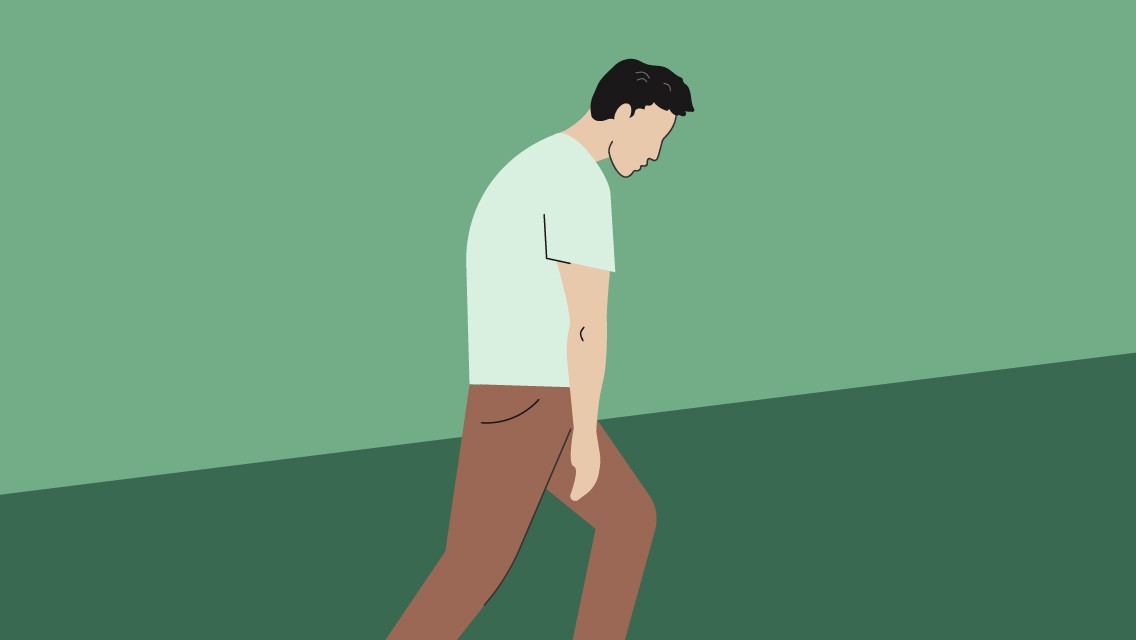Have you been feeling more run down and exhausted than usual? Not just the “I need a quick power nap” type of tired, but the kind of tired that makes you just dread your alarm clock and your to-do list? The kind of tired that makes day-to-day tasks literally drain every remaining ounce of energy out of you? The kind of tired that all but guarantees that you’ll come down with the sniffles and a sore throat the minute you will yourself into a workout?
If you answered “yes” to any of these, you’re not alone.
Exhausted is not a fun place to be, and you may be struggling with what some refer to as “adrenal fatigue.”
While the debate on its existence is hot, the cluster of complaints associated with this alleged syndrome is all too common. Read on to learn more about what adrenal fatigue is and what it isn’t — and what to do about it.
Adrenals, Explained
The adrenal glands, sometimes called the suprarenal glands, are two walnut-sized glands that sit on top of the kidneys. They secrete our main stress hormone, cortisol, as well as DHEA, a precursor to sex hormones.
The adrenal glands work in tandem with the hypothalamus in the brain and the pituitary gland. The interaction between the three (often referred to as the HPA axis) is intimately involved with our stress response, digestive and immune systems, and overall metabolism. When all is well, a cascade of hormones pings back and forth in the HPA axis, using a biochemical Morse code to create a system of checks and balances to stimulate cortisol when needed and suppress it when not.
Cortisol is not all bad — we need some, at the right times and in the right amounts. Ideally, cortisol levels rise in the morning, giving us energy to awake from our slumber and joyfully greet the day. (It’s possible!) Levels should drop from morning to noon, then gradually taper down and stay low throughout the night for a peaceful rest.
Additionally, in times of acute, immediate stress, cortisol shoots up, arming us with the quick energy needed to either meet face-to-face with the threat or (hopefully successfully) flee from it. After this “fight-or-flight” response, cortisol should return back to baseline to achieve balance and stability.
Where Things Go South
In today’s world, we thankfully do not encounter imminent, dangerous, life-threatening stressors that require a physical fight-or-flight response from us on a regular basis. While we are not usually sprinting from a tiger or fighting off a bear, we do have a whole new set of stressors to worry about.
This same blood-sugar-spiking, adrenaline-releasing hormonal fight-or-flight response instead gets perpetuated, on an all too consistent basis, with things like bumper-to-bumper traffic, the new era of cyberbullying, fear of identity theft, and worries about politics and world events — all of which rarely require an immediate, swift, and demanding physical reaction from us.
Your body still cranks out these hormones to address the perceived threat in an attempt to help you, but in these situations, it’s not doing your metabolism any favors.
Often, chronic stress is associated with higher levels of cortisol, which may contribute to sugar cravings, irritability, difficulty falling asleep, higher blood sugars, and that annoying “tired and wired” feeling — like when you feel sleepy, but find yourself binge-watching entire seasons of your favorite shows while scrolling incessantly through your news feed. Over time, the biochemical Morse code messages of the HPA axis have some sort of communication breakdown and cortisol does not return to optimal.
Another possibility is that cortisol levels may fluctuate more erratically — both higher than they should be and lower than they should be within the same day. In other words, a different type of change in the HPA axis function.
In time, it is possible to see lower-than-optimal levels of cortisol throughout the day. Clients who decide to start their health and wellness journey with objective cortisol lab testing and who find that they have lower-than-optimal levels seem to almost always have the same complaints initially: fatigue, a burned-out feeling, dizziness when going from sitting to standing, feelings of apathy, frequent colds, cravings for salty foods, and body aches.
In other words, they’re exhausted. Often, they genuinely want to eat well and exercise, but are legitimately too tired to take action.
The Gray Area
Western medicine recognizes the most extreme imbalances in cortisol levels: Cushing syndrome (associated with clinically high cortisol) and Addison’s disease (associated with clinically low cortisol). Addison’s is considered rare and requires medical treatment. In the absence of one of these diagnoses, cortisol is often not of great concern in the conventional approach.
On the other end of the spectrum, those with lower levels of cortisol, but not low enough to be diagnosed with Addison’s disease, who are seeking alternative health and wellness support may be told that their adrenals are tired.
The phrase “adrenal fatigue” is often used quite literally and in a context indicating that the adrenal glands themselves are worn out and in need of rest — like miniature, internal gland versions of an exhausted person dreading their alarm and catching the sniffles. However, this thought process is not an accurate representation of what’s truly going on under the surface.
Is adrenal fatigue real?
Using the term “adrenal fatigue,” while physiologically inaccurate, often can help explain and simplify some of the complex physiology that can occur when cortisol levels are low. At the end of the day, the goal is to look, feel, and function as optimally as possible and to be the best version of you that you can be.
The concept of “adrenal fatigue” really comes down to semantics.
From a fat loss, energy, vitality, and metabolism standpoint, cortisol imbalances are an issue and a potential barrier to success. Lower than optimal cortisol levels are of particular concern — even if someone does not have Addison’s disease. While it is unlikely that the adrenal glands themselves need a nap or a vacation, HPA axis dysfunction and cortisol insufficiency are a real thing that ought to be addressed.
How do I give my adrenals a proverbial vacation?
To properly address HPA axis dysfunction, there needs to be a baseline assessment of cortisol to determine the “state of the state,” so to speak.
Since optimal levels of cortisol are different in the morning, afternoon, and evening, it’s best to do a saliva or blood test to assess levels throughout the day. The ideal next steps to take really do depend on whether the pattern is generally high, generally low, or of the mixed variety. Blood tests also give insight, but using blood testing as a standalone for cortisol is a more limited method since it generally looks only at morning cortisol.
In addition to a diet based on wholesome foods with a higher-protein approach (since cortisol breaks down muscle tissue, increasing our protein needs), there are a few other nutrients to prioritize for support as well.
Omega-3 fatty acids, fiber, and adequate vitamin C and B-vitamin support (vitamin B12 and vitamin B6, in particular) can have a significant impact. Additionally, focusing on minimizing caffeine and added sugar, incorporating purposeful stress management techniques, prioritizing sleep, and paying particular attention to intelligent training with appropriate rest and recovery are all recommended tactics.
Surprisingly, in a lot of cases of cortisol insufficiency (i.e., lower cortisol), it’s not uncommon to have to exercise less intensely to see more results. (The cortisol is essential for energy and health, but when it’s out of balance, you are, too. Learn how to manage low cortisol levels at “How to Balance Your Cortisol Levels Naturally.“)
Depending on your cortisol levels, strategic supplementation with things like ashwagandha, ginseng, or licorice root could go a long way. Using Celtic or pink Himalayan sea salt, as well as no-sugar, naturally-sweetened electrolyte support is also often recommended, since stress can make it harder to maintain your hydration status.
Cortisol lab test results can also shed light on the best way to time both meals and exercise to better support your metabolism.
While there are a lot of potential specifics for the action plan that is right for you, it’s critical to remember that there is hope!
Adrenal concerns and HPA axis dysfunction, whether referred to as “adrenal fatigue” or not, often have a significant interplay with your nutrition, exercise, supplement, and lifestyle plan. You deserve to feel radiant and full of energy. Take charge of your health, regularly assess your levels, and partner with a practitioner to find the right strategy to bring you back to balance.




